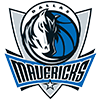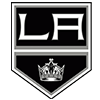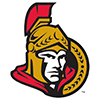Whether it's your first time playing fantasy sports or you're a long-time fantasy football player looking for a new challenge, this guide aims to educate you about how to approach fantasy basketball.
Fantasy basketball works on the same basic principles of any other fantasy sport. You construct a team of players from the respective league and earn points based on their real-life performance. The points you earn determine if you win or lose, whether it's that day, that week, or that season.
The tips and advice below should help you construct a serviceable -- and hopefully league-winning -- team, even if you haven't been actively following the NBA.
Understand Your Format
As with all fantasy sports, league format can alter which players are most valuable. Fantasy basketball is typically scored in one of four ways: Head-to-Head, Head-to-Head Points, Roto, Roto Points.Head-to-Head pits you against another member of your league, with one winner and one loser (or a tie, depending on your commissioner's feelings on such a thing). Those wins and losses determine who makes the playoffs, similar to real basketball. Winners and losers are determined by who accumulates the most stats in each statistical category (points, rebounds, assists, steals, etc.). For example, if your team accumulates 300 points, 200 rebounds and 100 assists, compared to my team's 450 points, 150 rebounds and 99 assists, you've won the matchup two categories to one.
Head-to-Head Points follows the same concept, except victory is achieved by totaling the most fantasy points, determined by a preset value for each statistic, rather than separating each statistic individually. Typically, values are either +1 (points, field-goals made, rebounds, blocks, etc.) or -1 (field-goal attempts, turnovers, etc.).
You either accrue more points than your opponent, or lose trying. Understanding how your commissioner assigns values is important, as well. For instance, if your commissioner believes turnovers should be -1.5 instead of -1, that can change the value of turnover-prone point guards such as Dennis Schroder, who averaged 6.3 assists but 3.3 turnovers per game last season.
The differences between Roto and Roto Points formats are the same, except there are no head-to-head matchups. Total categories or points are kept throughout the entirety of the season on what is essentially a giant scoreboard, with those at a predetermined cutoff point making the playoffs (if there are playoffs).
The difference between the four may seem subtle, but the scoring structure can significantly affect the fantasy value of certain players. Points formats generally reward teams that have the best overall players, while categorical formats reward teams that have players who are dominant in one or more statistics.
One way to demonstrate the difference between point and categorical leagues is to take a look at RotoWire's top-10 projected players for each format (in head-to-head).
The top-10 projected players for Head-to-Head Points are: Karl-Anthony Towns, Russell Westbrook, Giannis Antetokounmpo, Anthony Davis, LeBron James, Kevin Durant, Nikola Jokic, Rudy Gobert and Stephen Curry.
The top-10 projected players for Head-to-Head Categories are: Russell Westbrook, James Harden, Stephen Curry, Giannis Antetokounmpo, John Wall, Anthony Davis, Karl-Anthony Towns, Kawhi Leonard, DeMarcus Cousins and Kevin Durant.
I'll cherry-pick a couple players off those lists to help explain the importance of knowing your format.
Nikola Jokic is one of the most dynamic centers in the league, posting 16.7 points, 9.8 rebounds and 4.9 assists per game last season, so why does he fall at No. 8 for points formats and fails to make the top-10 for categorical formats? While he racks up a huge number of varying stats (including some three pointers), Jokic does not dominate one or more categories. As a result, he can carry your team in a points format, but acts as a top-tier supplementary player in categorical leagues.
John Wall is the opposite. He ranks fifth in categorical leagues but drops to 12th in a points format. Wall ranked second in the league in both assists (10.7) and steals (2.0) per game last season, which is a major asset when trying to win individual categories. That said, he's less valuable in points formats, as a result of his overall numbers. Last season, he was No. 18 in points per game (23.1), had a relatively high turnover rate (4.1), while shooting near league average from the field (45.1 percent).
Draft Day
Once you have a grasp of your format, the day of your league's draft should be much less intimidating. One of the main things to note about your league, which should affect how you draft, is how many players you are allowed at each position, as well as the number of bench slots.For example, in a standard, 12-team, ESPN Head-to-Head categorical league, you're allotted one starting point guard, shooting guard, guard, small forward, power forward, forward and two centers. There are also two utility spots and three bench spots. There's plenty of flexibility at hand – drafting three centers in a row to dominate the rebounding and blocks categories is viable because you can play all three on any given night.
Leagues differ, however. Some may allow for just one player at each traditional position with a utility and a deep bench. Some may allow for all utility players and one bench spot. In the former scenario, drafting two players in a row who play the same position may hurt you in the long run, as one would likely have to sit on the bench while the other plays.
Personally, when the draft kicks off, I usually take who I feel is the best player available with my first pick and build around that, rather than aiming for some specific kind of victory. I don't go into categorical drafts thinking I'm going to win blocks, steals and threes this season. That decision is made in accordance with the strengths (or weaknesses) of my first pick.
Using a prior example, if John Wall falls to me in a categorical draft at the No. 9 spot, I'll take him and then aim for other players who rack up assists and steals. He's also a quality rebounder for his position, so rebounds could be a third category to target. Depending on which stats are accounted for, you may be able to flat-out ignore drafting players who are great scorers, which goes against conventional basketball wisdom.
If you're stuck trying to decide between two or more players, or just want to learn more about a particular guy, consulting RotoWire's fantasy outlooks can be a way to clear things up. You can learn about trends, changing roles, injury history, etc.
To Trade or Not to Trade
In many leagues, almost without fail, some wise guy will start throwing out trade offers as soon as the draft ends, trying to grab someone they missed out on. If that guy sends you an offer, my advice in most cases is to politely decline. Have confidence in who you drafted, especially if this is your first time playing. No one offers you a trade thinking they're on the losing end.That said, do take note of whom they are trying to take from you. That information can be valuable down the line depending on how the season shakes out. Let's continue using John Wall, who you've now drafted, as an example.
Let's say immediately after the draft ends, the aforementioned wise guy offers you DeMarcus Cousins for Wall. That's not an easy trade to turn down. But, if you're still banking on winning the assists and steals categories, it doesn't make much sense for you, since Cousins is a scorer, rebounder, a three-point shooter.
Fast forward 20 games into the season, and the wise guy's starting point guard -- let's say Chris Paul – suffers a season-ending injury. Paul and Wall are very similar players in terms of statistical distribution – heavy on assists and steals – so he'll likely still be interested in Wall. Now you have leverage. Generally, I'd avoid trading top-10 players, but in this case you may be able to convince the desperate owner to throw in another valuable asset along with Cousins.
Patience and the Waiver Wire
Viewing the season in weeks, like fantasy football, rather than games, is important. If player goes on a five-game cold streak in basketball, that's relatively normal. If a player goes on a five-game cold streak in football, it's time to sound the alarms. After all, five games in the NBA is just 6.1 percent of the season. Five games in the NFL is 31.3 percent of the season.But, if one of your picks really isn't panning out – whether it's due to role, injury, age, etc. -- don't be afraid to cut and run. It happens every season. I can't remember the last time I kept all of my last three draft picks for the entire season.
Your most valuable resource, especially when searching for a replacement for one of your lower-end draft picks, is the waiver wire. Simply put: the players who weren't drafted or were let go by another team.
Keeping an eye on the waiver wire, even if you aren't actively looking to drop one of your current players, can be helpful. There may be someone on the wire who is simply performing better than expected and could be worth dropping one of your players for.
Prior to making a move, try to identify whether Player X's impressive performances are outliers or a trend. RotoWire's player notes can be helpful to identify whether it's the former or latter. Plenty of players have a big game here and there – few can sustain unexpected play for an extended period.
The catch is that if you wait too long, someone else may snatch that player up. Each season, plenty of gambles are won and lost in the waiver wire.








































